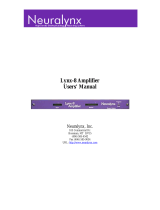
RabbitCore RCM4100
4.5 Other Hardware.................................................................................................................................. 38
4.5.1 Clock Doubler ............................................................................................................................38
4.5.2 Spectrum Spreader......................................................................................................................38
4.6 Memory.............................................................................................................................................. 39
4.6.1 SRAM.........................................................................................................................................39
4.6.2 Flash EPROM.............................................................................................................................39
4.6.3 NAND Flash............................................................................................................................... 39
Chapter 5. Software Reference 41
5.1 More About Dynamic C..................................................................................................................... 41
5.2 Dynamic C Function Calls................................................................................................................ 43
5.2.1 Digital I/O...................................................................................................................................43
5.2.2 Serial Communication Drivers...................................................................................................43
5.2.3 SRAM Use..................................................................................................................................43
5.2.4 Prototyping Board Functions......................................................................................................45
5.2.4.1 Board Initialization............................................................................................................ 45
5.2.4.2 Alerts.................................................................................................................................. 46
5.2.5 Analog Inputs (RCM4000 only).................................................................................................47
5.3 Upgrading Dynamic C .......................................................................................................................61
5.3.1 Add-On Modules........................................................................................................................61
Chapter 6. Using the TCP/IP Features 63
6.1 TCP/IP Connections...........................................................................................................................63
6.2 TCP/IP Primer on IP Addresses.........................................................................................................65
6.2.1 IP Addresses Explained.............................................................................................................. 67
6.2.2 How IP Addresses are Used....................................................................................................... 68
6.2.3 Dynamically Assigned Internet Addresses.................................................................................69
6.3 Placing Your Device on the Network ................................................................................................ 70
6.4 Running TCP/IP Sample Programs.................................................................................................... 71
6.4.1 How to Set IP Addresses in the Sample Programs.....................................................................72
6.4.2 How to Set Up your Computer for Direct Connect.................................................................... 73
6.5 Run the PINGME.C Sample Program................................................................................................ 74
6.6 Running Additional Sample Programs With Direct Connect ............................................................74
6.7 Where Do I Go From Here?............................................................................................................... 75
Appendix A. RCM4000 Specifications 77
A.1 Electrical and Mechanical Characteristics ........................................................................................78
A.1.1 A/D Converter ........................................................................................................................... 82
A.1.2 Headers......................................................................................................................................83
A.2 Rabbit 4000 DC Characteristics........................................................................................................ 84
A.3 I/O Buffer Sourcing and Sinking Limit............................................................................................. 85
A.4 Bus Loading ......................................................................................................................................85
A.5 Conformal Coating............................................................................................................................88
A.6 Jumper Configurations...................................................................................................................... 89
Appendix B. Prototyping Board 91
B.1 Introduction .......................................................................................................................................92
B.1.1 Prototyping Board Features....................................................................................................... 93
B.2 Mechanical Dimensions and Layout .................................................................................................95
B.3 Power Supply.....................................................................................................................................96
B.4 Using the Prototyping Board............................................................................................................. 97
B.4.1 Adding Other Components........................................................................................................99
B.4.2 Measuring Current Draw...........................................................................................................99
B.4.3 Analog Features (RCM4000 only) ..........................................................................................100
B.4.3.1 A/D Converter Inputs...................................................................................................... 100
B.4.3.2 Thermistor Input ............................................................................................................. 102
B.4.3.3 A/D Converter Calibration.............................................................................................. 102





















